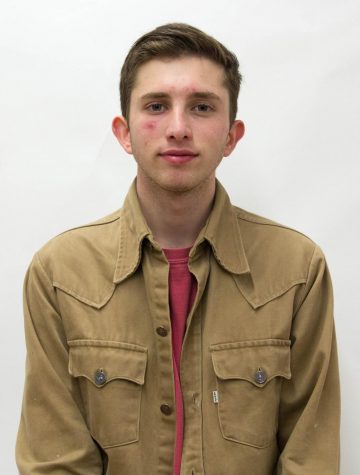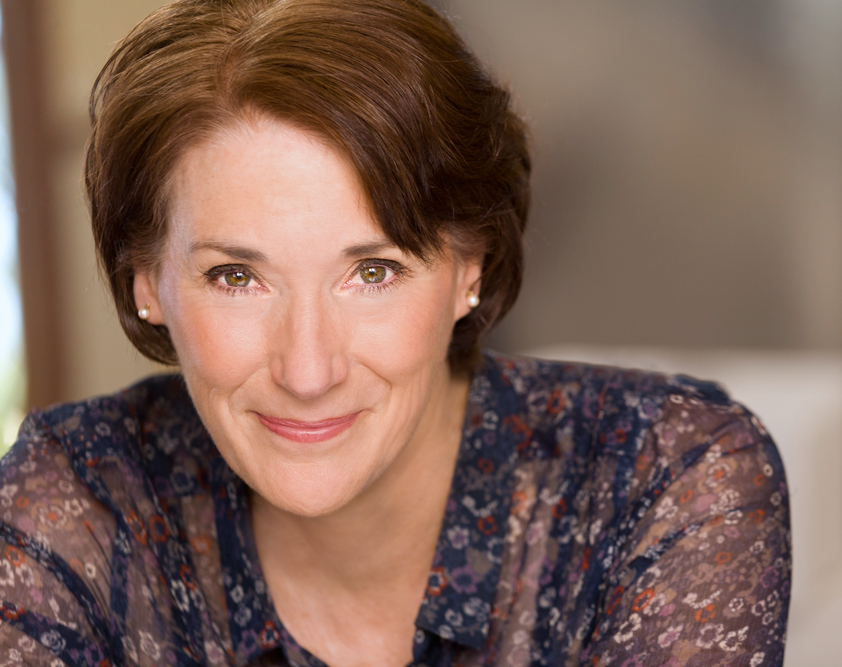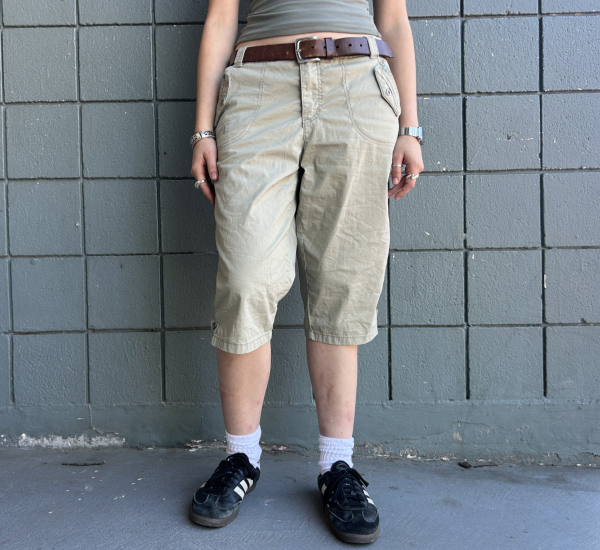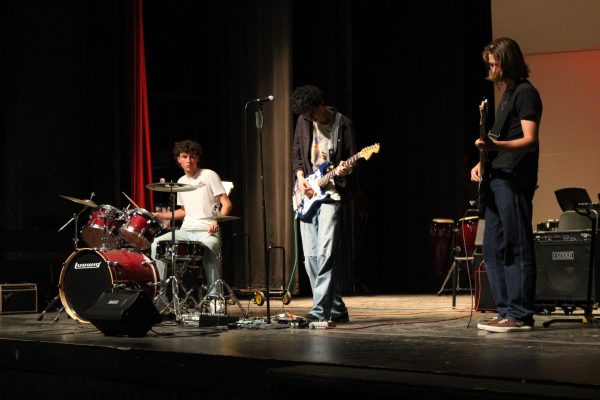Shakespeare and scene work: An interview with teacher and actress Terry Bamberger
From performing on stage to working with students, Terry Bamberger has experienced a lot over the course of her career. Bamberger is one of Lowell’s English teachers, but she is also an accomplished actress and acting coach. Her career has taken her from working on Hollywood films such as Coffee and Language to theater productions with the Royal Shakespeare Company. She went to college at UC Santa Barbara and trained at the American Conservatory Theater before transitioning to teaching. We sat down with her and talked about her acting career and the transition to teaching at Lowell. Bamberger explained that she finds many more similarities between her two professions than she does differences.
When/how did you start acting?
I came to acting pretty late. I was a freshman in college and I had a Shakespeare class and the Shakespeare professor had me read a scene from the “Tempest.” Instead of sitting and reading it like it was poetry, he had us get up and do it. That was so mind blowing to me, just that everything doesn’t have to be read it can be lived and experienced. The scene was where Ferdinand is carrying logs and she’s trying to stop him from carrying logs back and forth and then all of sudden [the professor] had us do it! That moment will forever be with me because it just said… y’know we have these great literary giants, we have Shakespeare, and it becomes more than just poetry. It also awakens something of the actor in me. That’s when the bug bit.
What’s your motivation to act and what has been an inspiration for you to act over the course of your life?
I don’t know if you can label it. I have a lot of actor friends and it’s something we have to do. It’s an art expression and I have to do it. I don’t know how else to put it into words. It’s a basic primal need as far as whatever makes up this person, has to it. I don’t know how to describe that feeling. [laughter] I love Shakespeare. I love the humanity in it. That’s what keeps me going.
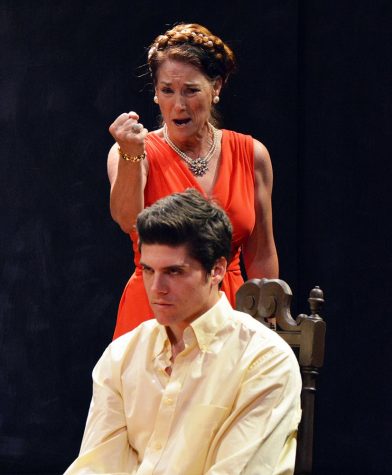
Bamberger Playing B in Three Tall Women by Edward Albee at Custom Made Theatre.
What was the first big production that you worked on?
I got to study with the Royal Shakespeare company in London. I won a grant and I got to study in London over the summer in college. I performed some scenes for Zoe Wanamaker. She’s the actress in the Harry Potter movies who plays Madam Hooch. She gave me this big ’ol hug and just loved my performances so that was a great moment.
What have you learned from acting and how has acting influenced your life?
Acting teaches you a lot about yourself. You have to know yourself before you take on other characters. You have to understand what your quirks are and how you respond to things before you can go into a neutral space and build another character on it so you’re not influenced. It has definitely taught me more about myself.
Describe how you get ready for a role and what emotions accompany that process.
There’s this definite arc to it. First you get the roll and you go, “Yes!” So you get elated and then you look at the part and read the script and you get scared. I’ll think things like, “There are so many lines!” or “How am I going to understand this character?” And then there’s this scary part where you start to learn about the character and memorize lines and figure out lines. All of the sudden it’s sort of a chaos limboland where you sort of know your character but sort of don’t. The you start rehearsing with the other actors and the rehearsals will get ugly at some points which can be really miserable to go through. And then you come through the other side discovering your character and you just want to show the audience this great story. And then you get tired. The last show went Tuesdays through Sundays. That was really exhausting.
What are some productions that you’ve been proud of or performed in recently?
I was very proud of a production I did a year or two ago that I did with the Bay Area Children’s Theater company, a nationally known theater company that does really high quality performances for children where they don’t treat you like Barney. We did a production of “The Miraculous Journey of Edward Tulane.” It’s beautiful, it’s sad, it’s heart running, but it was just a beautiful production and I played 11 characters in it. It taught me a lot personally as an actor and how to switch characters fast. It taught me how not to panic if a prop isn’t backstage for you. And then it also taught me about finding the connection and love for a variety of characters and I got to do it all in one show so that was really fun. We did a 1940s play called “Born Yesterday” at the San Francisco Playhouse last year. That was just fun to be a part of. I played a senator’s wife and I had the big ’40s hats. It was just fun because they were high-status, ridiculous people.
How did you get into teaching?
It all started when I broke my arm about 20 years ago. It was an 11-piece break, so I wasn’t allowed to move for six months. I was solely an actor at the time. I had this epiphany: I want to share how much I love [acting] with students. At the SOTA-Academy Campus they were asking for an arts teacher and I was so excited to work with those kids who had never even thought about acting or drama or anything. We had the best time. Their curiosity spurred me to ask, “How do you share this so that someone can learn from it?” I started at Academy and then trained at SOTA, which is on the same campus but then the principle that was there for a time became the principal at Oakland School of the Arts and he asked me to join him over there and teach full-time. So I was a full-time acting teacher; it was really a lot of fun.
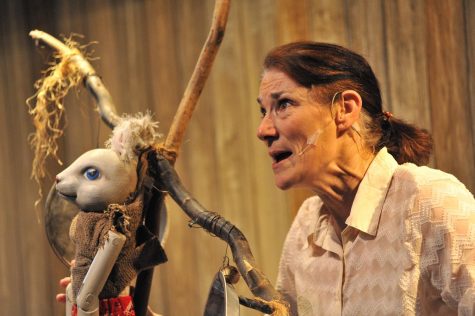
Bamberger plays The Old Lady in Bay Area Children’s Theater’s production of The Miraculous Journey of Edward Tulane.
How is acting different than teaching for you?
I find more similarities than I do differences, actually. When you are teaching a class or talking about a novel, your scene partner are the students. You can never predict–were all individual, living, breathing, creatures–so you have to live in the moment. One of our primary goals in performances is to be in the moment and that happens in the classroom all the time because you never know how students are understanding or not understanding something. Everybody’s different. I love that about the similarities. The obvious things are how we look at breaking down characters, students in the classroom may not be comfortable standing up or performing where is in an actor group you have to fight them off to get people to be quiet. There are a lot of similarities. It’s all about story time, grammar and mechanics of language arts rather than what an actor is trying to do but there’s so much that’s the same. The characters analysis, character study, setting, the where am I, what am I doing here and looking at these elements of stories in a class.
You were talking earlier about that indescribable feeling and primal nature that motivates you to act. Do you see that similarly reflected in students eyes?
Absolutely. I’m very proud of my students. I’m very proud of a student who is now on a Netflix show. She plays one of the three “bad girls” on “[The Chilling Adventures of] Sabrina.” She’s the tall one in the middle. I had her as a ninth grader and she was always on my case about stuff. She really had that fire in her belly for acting. And, absolutely, I see that in a lot of the kids.
